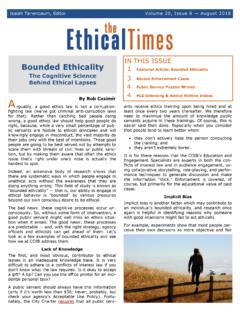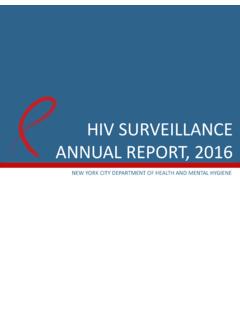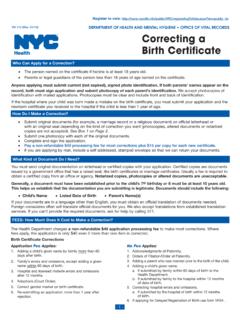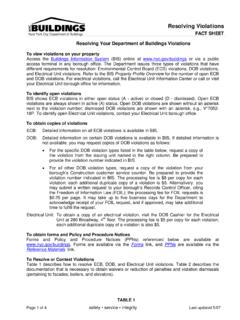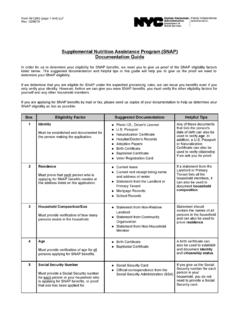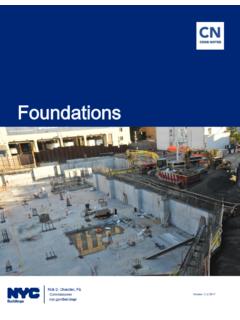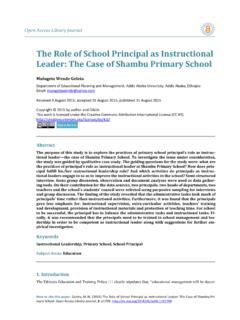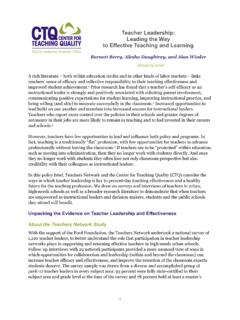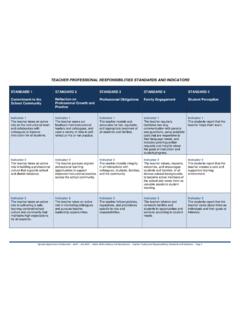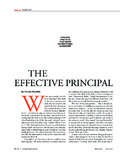Transcription of WHAT IS YOUTH LEADERSHIP DEVELOPMENT?
1 Social and Emotional Intelligence: Self-awareness (understanding one s strengths and weaknesses), self-regulation (being in control over one s emotions), motivation (using inner drive to accomplish tasks), empathy (understanding different points of view) and social skills (relating well to others) Collaboration: Quality relationships with peers and adults, team building, problem solving, con-flict resolution, planning and decision-making Communication: Public speaking/writing and presentation skills FOCUS ON KEY LEADERSHIP SKILLS WHAT IS YOUTH LEADERSHIP DEVELOPMENT?
2 Continuous: Ongoing component, happening be-fore, during, and after an activity or action Connection: Consider how feelings connect to ac-tion and connect action to ideas about how the world works Challenge: Refine understanding, deepen learning, engage in critical thinking Contextualize: Evaluate action, ensure action is appropriate and meaningful to the experiences of young people Recognize accomplishments Make new plans Authentic opportunity: YOUTH voice and choice, participation on all levels with varied and progressive lead-ership roles, having the opportunity to give beyond oneself Safe environment: physically safe, emotionally and psychologically safe, welcoming atmosphere, inclusive and diverse, and appropriate program space Community building: Create opportunity for YOUTH to feel part of a group Mentor Access: YOUTH -adult partnerships and relationships Ask-listen-encourage.
3 Ability of staff to carry out positive, purposeful interactions with YOUTH Reframing conflict: Role of staff in a conflict situation and ability of staff to turn a conflict situation into an opportunity for growth Adapted by COMPASS Program Quality and Innovation unit and Developments Without Limits (DWL) from Redmond and Dolan, 2014 and the YOUTH Program Quality Assessment (YPQA), the Weikart Center for YOUTH Program Quality. CREATE THE RIGHT ENVIRONMENTAL CONDITIONS FOR LEADERSHIP DEVELOPMENT Motivate: Role modeling, motivating others and inspiring Mastery: Skill mastery, persistence and ability to learn from mistakes and commitment Engage school and/or community: Service learning, civic engagement, YOUTH council, counselor or leader in training, etc.
4 LEARN BY DOING LEADERSHIP REFLECT ON ACTION The purpose of this framework is to promote a common language for YOUTH LEADERSHIP development and to assist providers in mapping out and designing the core components and supports that are needed for quality YOUTH LEADERSHIP programming. CORE COMPONENTS Skills LEADERSHIP skills are essential for young people to feel satisfaction and contribute to their community. YOUTH LEADERSHIP activities can offer young people the opportunity to devel-op their skills, work closely with others, share ideas and influence change.
5 Such skills are fundamental to the belief that leaders can be made. Action Without action, young people cannot learn to be leaders. Motivating others, learning to master new skills, and persevering through challenges are critical steps to YOUTH leader-ship development. Action can take on many forms but it should include the development, planning and implementation of a community based action project such as service-learning, civic engagement, YOUTH councils, etc. The aim is for young people to contribute to their community through solving problems and exercising their LEADERSHIP skills.
6 Reflection Reflection is a crucial part of YOUTH LEADERSHIP , which allows young people to look back on, think critically about, and learn from their experience or action. Reflection also allows everyone to hear another s perspective and provides opportunities to develop skills in thinking about and making moral and ethical judgments. Staff and young people can also use reflection to improve the quality of activities and experiences. Overall, reflection should be continuous, connected, challenging and contextualized (The 4 C s of Reflection).
7 The process of reflection may include acknowledging and/or sharing of reactions, feelings, observations, and ideas about anything regarding the activity. Reflection can happen through writing, speaking, listening, reading, drawing, acting, and any other way you can imagine. SUPPORTS Curriculum and instructional Strategies In order to effectively address the three core components, it is critical to consider the design of the LEADERSHIP curriculum and instructional strategies. The curriculum should in-tentionally include and identify the LEADERSHIP skills, how the action and reflection components will be integrated into programming, and considerations and opportunities to cre-ate a supportive environment.
8 Various practices or instructional strategies can also be used to support the core components: active learning, building community, cooperative learning, planning and reflection, YOUTH voice strategies, scaffolding for success, and project-based learning. Evaluation and Feedback An important learning process for young people and staff is to evaluate and illicit feedback. Evaluations can focus on the usefulness of the program, the relevance of the activity, suggestions for changes, and identify ways in which participants might apply what they learned.
9 Staff and community members involved in the program can also give (and re-ceive) constructive feedback regarding skills, how individuals are perceived, and their effectiveness as leaders. It is important that an atmosphere of trust and acceptance be developed so that participants are comfortable with both giving and receiving feedback (Doherty, 2003). Supportive Environments Young people can become leaders when they feel safe and supported. This can be conceptualized as having genuine opportunities for YOUTH to participate and lead, feeling safe both physically and emotionally, being exposed to settings where YOUTH can learn and engage new content, build skills, and develop and have access to supportive staff who can carry out positive, purposeful interactions (ask-listen-encourage), turn a conflict situation into an opportunity for growth (reframing conflict), and help guide a young person through their LEADERSHIP journey.
10
